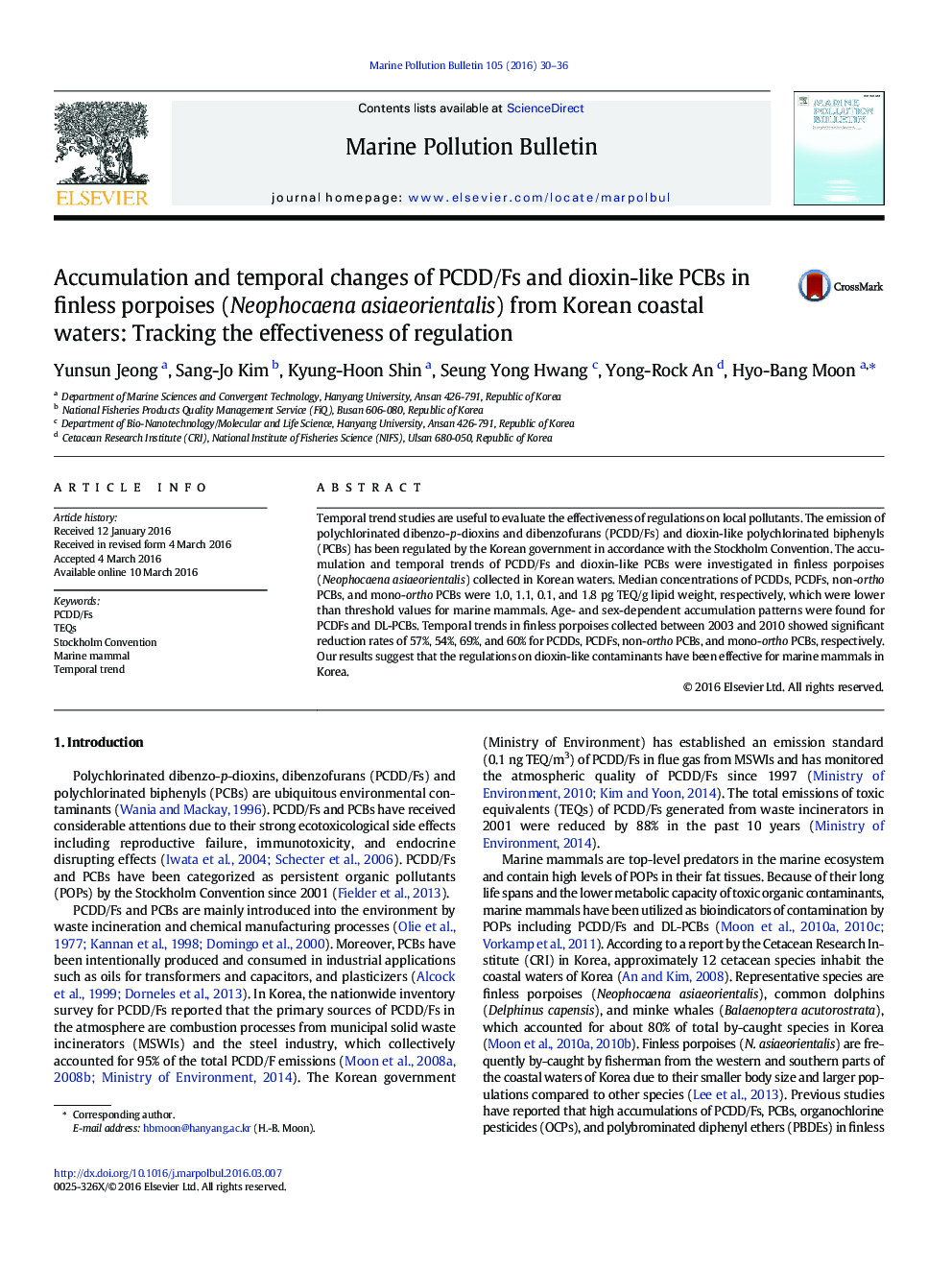| Article ID | Journal | Published Year | Pages | File Type |
|---|---|---|---|---|
| 4476511 | Marine Pollution Bulletin | 2016 | 7 Pages |
•TEQ concentrations in finless porpoises were lower than the threshold values for marine mammals.•Age and sex-dependent accumulation pattern were found for dioxin-like contaminants.•Greater than 50% reduction rates were observed for PCDD/Fs and dioxin-like PCBs in time-gap porpoise samples.•Regulation on PCDD/Fs has been effective for marine mammals in Korea.
Temporal trend studies are useful to evaluate the effectiveness of regulations on local pollutants. The emission of polychlorinated dibenzo-p-dioxins and dibenzofurans (PCDD/Fs) and dioxin-like polychlorinated biphenyls (PCBs) has been regulated by the Korean government in accordance with the Stockholm Convention. The accumulation and temporal trends of PCDD/Fs and dioxin-like PCBs were investigated in finless porpoises (Neophocaena asiaeorientalis) collected in Korean waters. Median concentrations of PCDDs, PCDFs, non-ortho PCBs, and mono-ortho PCBs were 1.0, 1.1, 0.1, and 1.8 pg TEQ/g lipid weight, respectively, which were lower than threshold values for marine mammals. Age- and sex-dependent accumulation patterns were found for PCDFs and DL-PCBs. Temporal trends in finless porpoises collected between 2003 and 2010 showed significant reduction rates of 57%, 54%, 69%, and 60% for PCDDs, PCDFs, non-ortho PCBs, and mono-ortho PCBs, respectively. Our results suggest that the regulations on dioxin-like contaminants have been effective for marine mammals in Korea.
Graphical abstractFigure optionsDownload full-size imageDownload as PowerPoint slide
